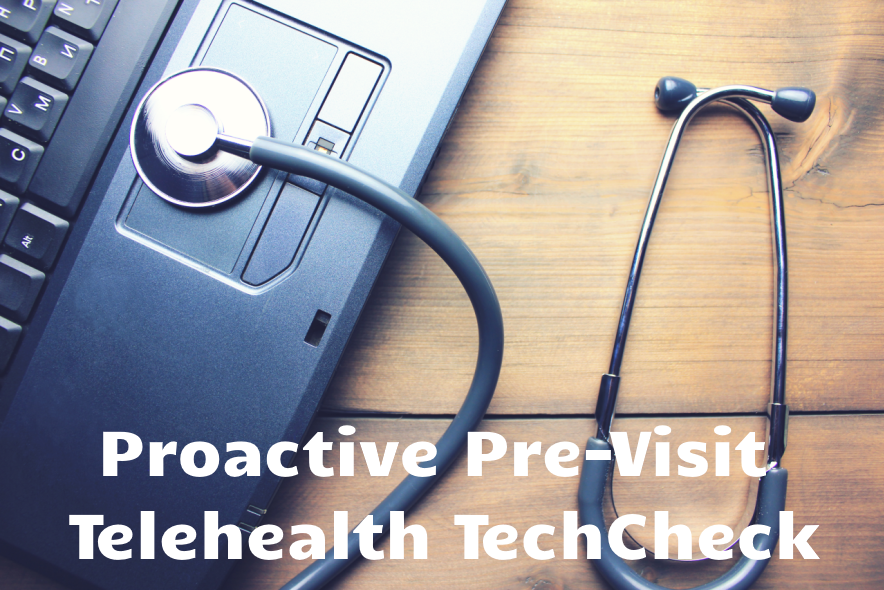According to a survey published by J.D. Power, the three top complaints by patients about telehealth include:
- limited services
- lack of awareness of costs
- confusing technology requirements
In this week’s column of Telehealth Tuesday I’m presenting three solutions to address those complaints.
The Good News
The good news from the survey is the stark increase in utilization (36% of patients vs. 9% in the year before), thanks to, unfortunately, in large part to the Covid-19 health crisis.
What I find remarkable about the top 3 barriers though, is that patients are now beginning to complain about the limited services. While this may be a reflection on the survey design (the results seem to focus on the telehealth services provided by the big “telehealth-only” service companies such as Teladoc, AmWell and MDLive along with the telemedicine offerings provided by payors), it surely points to the fact that the modern healthcare consumers want MORE healthcare services.
Looking at the survey and its focus, it is also worth noting, that there is telehealth and then there is telehealth. What I mean is that on the one side there are dozens of telehealth services companies, some of which are by now household names such as Teladoc and AmWell, and on the other side are tens of thousands of healthcare providers using telehealth to deliver care to their patients at a distance.
One is a stand-alone service offering – a virtual clinic if you will and the other form is an alternative care delivery process offered by the established “brick and mortar” clinics. For the purpose of this column, I will focus on what healthcare delivery organizations that are leveraging telehealth can learn from the survey.
Solution 3: Telehealth TechChecks
Very quickly in 2020 one best practice we put in place with our clients was the notion of a telehealth visit “TechCheck”: a brief call with the patients before their first visit to help them with the technology and setting them up for a great telehealth experience.
Due to the antiquated limitations of Medicare, prior to the Covid-19 health crisis most of telehealth delivered by health systems and clinics was actually delivered to other clinic locations, and rarely to a patient’s home.
Covid-19 changed all of that and virtually all of telehealth shifted to DTC BYOD telemedicine — Direct-to-Consumer, Bring-Your-Own-Device. In our previous advisory work since 2008, we’ve always tried to stay away from “DTC” care, for exactly the reasons that telehealth during Covid highlighted: inadequate access to reliable internet speeds and oftentimes inadequate technology, such as smartphones, tablets, or computers.
Realizing that asking patients to come into a clinic defeated the purpose of leveraging telehealth to keep patients and healthcare staff safe, we implemented the best solution we could think of: Proactive Pre-visit Telehealth TechChecks.
As the name suggests, these calls were conducted way ahead of the actual visit and mostly offered to first-time telehealth users or those that experienced problems during their last visit. The reason for scheduling them ahead of time (vs. the day off) is so that we could address any issues and offer an alternative solution – finding a better connection or a WiFi hotspot, or offering a “loaner tablet”, etc.
But the TechCheck, conducted by a technically-savvy person with great customer service skills (including patience!), did not only address the technical issues such as finding the login link, enabling the camera/microphone. The TechCheck assistants also helped patients find the best location in their house that would provide privacy, good lighting, and a proper background.
In addition, the TechCheck person would suggest that patients may want to use their headphones if they did not want the conversation to be overheard by others. Especially for behavioral health visits, clients were also instructed to prop up the camera so that the clinician was able to see more or less the whole upper body.
Implementing the TechChecks allowed patients and clinicians to have a stellar first telehealth experience and many stayed with video telemedicine, given their ability to accomplish what previously required an in-person visit.



Solution 2: Virtual Care Workflows
I think most of this can be attributed to the healthcare organization’s (and oftentimes even the payors’) lack of understanding as to how the billing would actually occur on the back end.
The obvious solution to avoid this issue altogether is the proper replication of the “in-person care world” to the “virtual care world”. What I mean by this is that there are a number of workflows that must be redesigned and optimized for the virtual care environment.
Most organizations initially only focused on the actual visit (“Click on the Link. The physician will be with you shortly.”) but very little deliberate thought was put into the “before” and “after” of a telehealth visit: How do patients schedule themselves? How do they sign forms, take assessments, share their vital signs? How to collect co-pays? How to schedule the next appointment?
Most of these questions went unanswered, thus leaving patients unaware, e.g., of potential co-pays or other costs that a visit may incur.
As more guidance is now available from payors on the cost of telehealth visits to the patients, this information can be provided at multiple touch points: at the time of scheduling or as part of the scheduling notification; during the TechCheck; or just shortly before the patient is connected with the patient.
Solution 1: Telehealth Growth
The obvious solution to the top barrier mentioned by 24% of the patients — limited services — is of course to increase the number of services that are available.
Predominantly these days the most common services available are behavioral health and primary care. Especially the national telehealth organizations focus mostly on primary care and behavioral health in their “direct-to-consumer” marketing.
The challenge here is not, as one may imagine, that other clinical specialties or services do not lend themselves to telehealth. From orthopedics to dentistry, from urgent care to surgery, from physical therapy to nutrition education — many medical and clinical services can be safely and efficaciously delivered via telehealth.
The biggest problem to a more widespread use of telehealth, particularly in subspecialty areas, is a resistance to change, a “this does not work for our specialty” response, that is often simply a reflection of not wanting to change.
A friend of mine recently saw his rheumatologist for a follow-up visit to review some test results. When my friend asked the physician after the 5-minute visit whether they could not have done this via telemedicine, the physician just shrugged his shoulders and said “I guess we could”.
What is missing is a strong commitment by leadership that telehealth will become a viable alternative to in-person care, because that is what in the long run patients desire. What is needed is Conscious Change Management to guide the clinicians and others through this change; by highlighting the economic need to become good at telehealth; and by providing adequate clinician training and telehealth support.
Only then can organizations think about expanding their offerings – and prevent their patients from finding their telehealth service elsewhere.








To receive articles like these in your Inbox every week, you can subscribe to Christian’s Telehealth Tuesday Newsletter.
Christian Milaster and his team optimize Telehealth Services for health systems and physician practices. Christian is the Founder and President of Ingenium Digital Health Advisors where he and his expert consortium partner with healthcare leaders to enable the delivery of extraordinary care.
Contact Christian by phone or text at 657-464-3648, via email, or video chat.







Leave A Comment